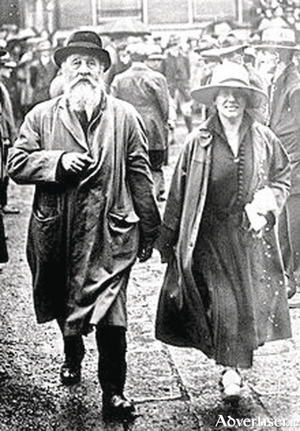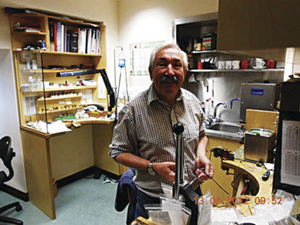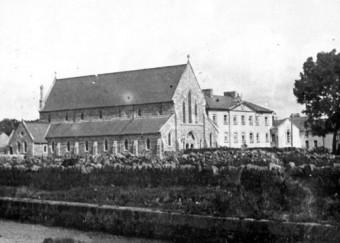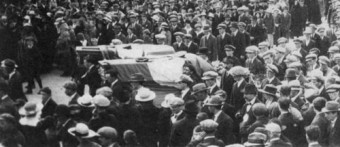Search Results for 'Michael Griffin'
16 results found.
A young girl carried the scars of war

In an attempt to bring some normality into their lives following the traumatic years of the War of Independence, and the Civil War, Professor Tom Dillon, and his wife Geraldine (nee Plunkett), moved their five children to Dangan House, about three miles north of Galway town, close to the River Corrib. It is now a flourishing garden nursery, run by the busy Cunningham family and staff, but in the late 1920s it was a rambling two-storeyed manor house with shallow steps leading to a wide front door. Their father bought a cow, and chickens ran wild in the yard. In many ways it was an ideal home to bring up a lively young family, but understandably the terrors and the residue of those early years still bore heavily on the children. Politics was still a dominant player in their lives.
Hartmann’s of Galway

The first member of the Hartmann family to arrive in Galway was Alphons. His older brother Joseph was already established in business in Limerick. Joseph went back to Triburg in the Black Forest in Germany in 1895 to get married, and when he and his bride were about to return to Ireland, his father asked him if he would take Alphons with him.
Fr Michael Griffin commemoration this Sunday
The annual commemoration in honour of Fr Michael Griffin, a Galway priest abducted and killed by British forces during the War of Independence, takes place in Barna this Sunday.
The Claddagh National School

An advertisement in the Irish Independent in July 1931 invited tenders from competent builders for the erection and completion of the proposed new St Nicholas’ National School in the Claddagh. When the new school was built it was described as “An attractive rectangular building with a red tile roof made by the Galway Brick and Tile Company”. The outdoor toilets were at the end of the playground.
Shop assistant informs judge of court closures
Judge Devins stated her anger at the basic lack of respect shown to the court as she saw it, saying: “I am now sitting in Ballyhaunis on the last day of the court. I am angry at the lack of basic respect for the District Court. I am saying this as a judge of the District Court and for the staff and the people who use it. It borders on contempt for us all.”
St Joseph’s Church

On this day, February 7, in the year 1886, St Joseph’s Church was consecrated. It was to be the main church of the Parish of Rahoon, which at that time extended from Corcullen to Furbo. There were already two chapels in the parish, one in Bushypark and one in Barna, and they served their own areas. For those parishioners living closer to the town, there was no designated church. Some would attend Mass in the chapel of the Presentation Convent, but it was not very large and worshippers often had to kneel on the ground outside, irrespective of the weather conditions. The parish had a big population and major annual events such as confirmation had to be moved to the Pro-Cathedral.
Top turnout and times for first Mayo AC 2012 Road League

Conditions were good for the third Annual Kilmovee 10k on Saturday afternoon. There was a record turnout of runners and walkers, with 406 finishers.
Galway 1910 - 1923, the changing years

Early in 1916, Pádraic Pearse visited Athenry to discuss plans for the Rising. He wanted the Volunteers to hold the county at the River Suck at Ballinasloe, to capture Galway city, and then, if possible, to march on Dublin. There were several variations of this strategy, but whichever plan was finally agreed, its success depended on the Volunteers receiving modern weaponry. Up to then the men had been rehearsing with shotguns, and sticks. Pearse assured them that small arms, including assault rifles and machine guns, were on their way. They would arrive in Gort, and be distributed from there.


